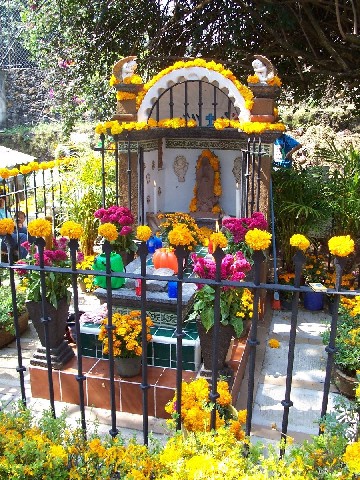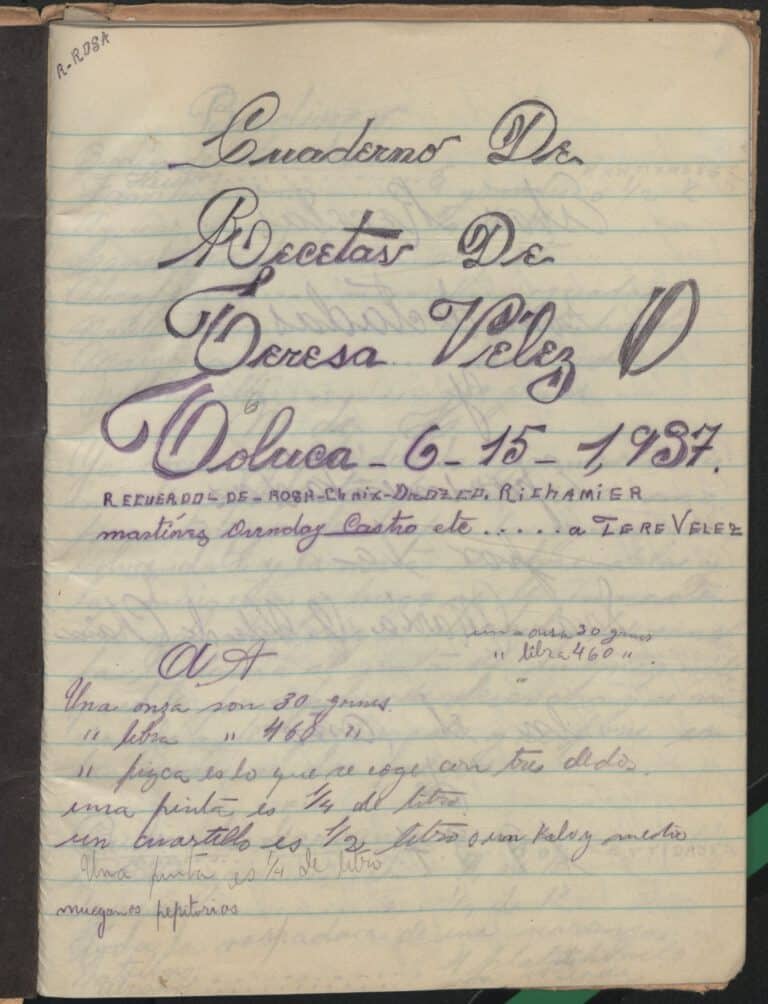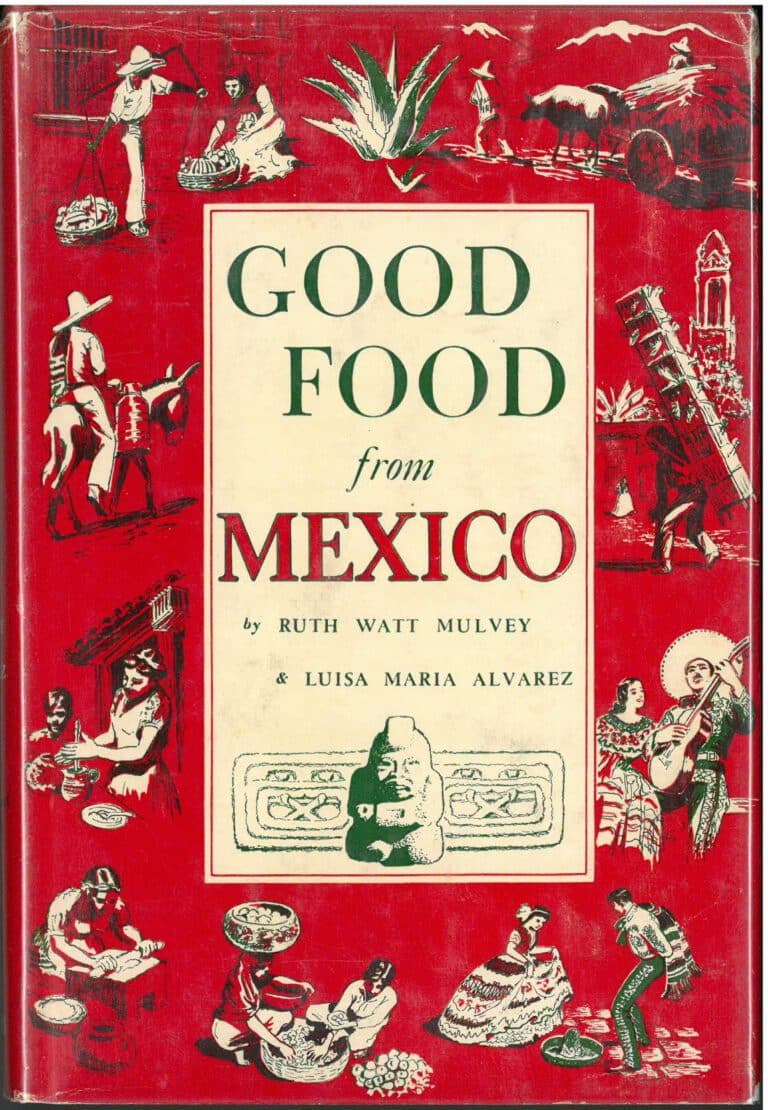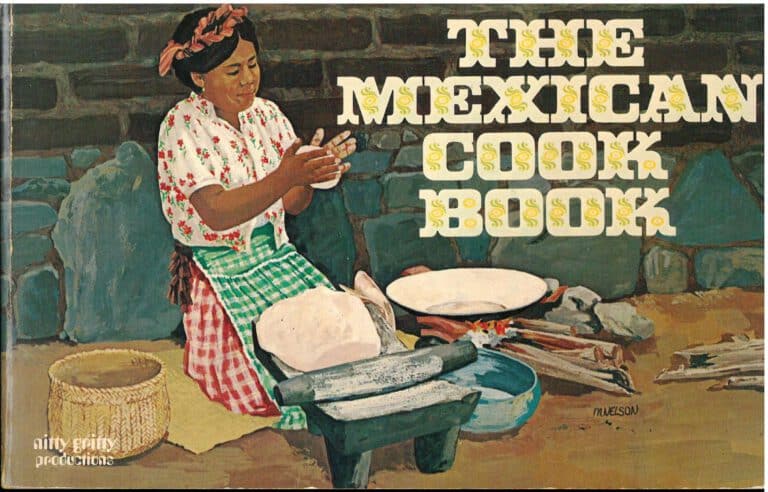Mango Cucumber Salsa 2002
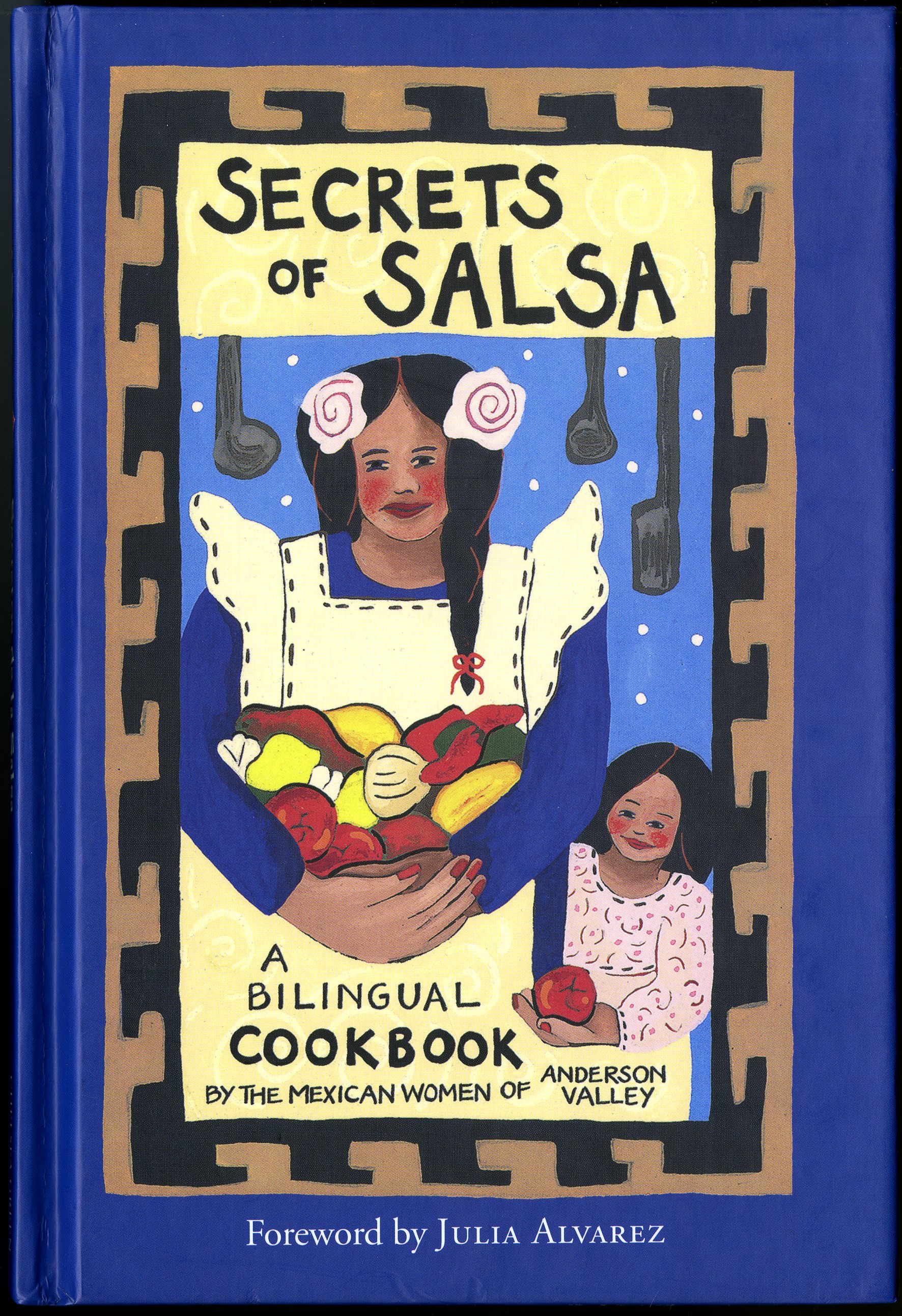
Brennan, Kira. Ed. Secrets of Salsa = Secretos de la Salsa: A Bilingual Cookbook by the Mexican Women of Anderson Valley. White River Junction, Vermont: Chelsea Green Publishing Company [TX819. S29 S43 2002].
Secrets of Salsa was the product of an English as a Second Language class at Anderson Valley Adult School in Anderson Valley, California. Students took turns bringing in a favorite salsa, and during each session, the class translated the recipe from Spanish to English and shared stories about their recipes. The cookbook presents 25 of these recipes in both Spanish and English, ranging from Salsa Fresca Tradicional, a pico de gallo style salsa of fresh tomatoes, serrano chiles, and cilantro, to more unusual recipes such as Salsa de Mango y Pepinos, a mix of cucumbers and mangos, or Salsa de Ajonjolí Tostado, a purée of chiles de árbol and sesame seeds. All three of these recipes are presented below.
Salsa de Mango y Pepinos (no es picante) by Teresa Álvarez (P. 7)
- 2 pepinos medianos
- 1 mango grande
- 1-2 chiles jalapeños o serranos
- 3 limones verdes
- 1/2 diente de ajo
- 1/2 cucharadita de chile en polvo
- sal al gusto
Pelar el mango y los pepinos. Picarlos en trocitos. Agregar el ajo y los chiles bien picados. Ponerlo todo en un tazón y agregarle el jugo del limón, la sal al gusto y el chile en polvo.
Este salsa viene de “tierra caliente” y es conocida como “pico de gallo.” Teresa recuerda que su abuela la preparaba. Es una salsa fresca y excelente en días calurosos. Teresa es de Uruapán, Michoacán y ha vevido en Anderson Valley por diez años.
Mango Cucumber Salsa (mild) by Teresa Álvarez (P. 6)
- 2 medium cucumbers
- 1 large mango
- 1-2 jalapeños or serrano chillies
- 3 limes
- 1/2 clove garlic
- 1/2 tsp. chili powder
- salt to taste
Peel mango and cucumbers. Chop into small bite-sized pieces. Add finely chopped garlic and chilies. Put into a bowl with salt and lime juice. Sprinkle with red chili powder.
This salsa comes from the “tierra caliente” (the hot lands) and is commonly known as “pico de gallo” (rooster’s beak). Teresa remembers her grandmother making this salsa and how refreshing it could be on hot days. She is originally from Uruapán, Michoacán, and has lived in Anderson Valley for ten years.
Salsa de Ajonjolí Tostado (muy picante) by Carmelia Roldàn & Arcelia Saucedo (p. 9)
- 30 chiles de árbol (secos)
- 2/3 taza de aceite
- 1/2 diente de ajo
- 3 cucharaditas de semillas de ajonjolí (tostadas)
- sal al gusto
En una sartén caliente echar las semillas de ajonjolí y moverlas constantemente hasta tostarlas. Picar bien los chiles y el ajo. Calentar bien el aceite y agregar los chiles, el ajo y las semillas de ajonjolí. Tapar y cocinar por un minuto. Apagar el fuego y dejar que se enfríe. Licuar los ingredientes a velocidad alta. Poner sal al gusto. No es necesario regrigerarse. Esta salsa dura de dos o tres semanas.
Este salsa viene de un restaurante en Uruapán que se llama La Pachita. Es una salsa muy popular y se sirve con muchos platillos mexicanos, especialmente el pozole. Es una salsa deliciosa y muy picante. Camelia y Arcelia son hermanas y vienen de Uruapán, Michoacán.
Toasted Sesame Salsa (hot) by Carmelia Roldàn & Arcelia Saucedo (p. 8)
- 30 chiles de árbol (secos)
- 2/3 taza de aceite
- 1/2 diente de ajo
- 3 cucharaditas de semillas de ajonjolí (tostadas)
- sal al gusto
En una sartén caliente echar las semillas de ajonjolí y moverlas constantemente hasta tostarlas. Picar bien los chiles y el ajo. Calentar bien el aceite y agregar los chiles, el ajo y las semillas de ajonjolí. Tapar y cocinar por un minuto. Apagar el fuego y dejar que se enfríe. Licuar los ingredientes a velocidad alta. Poner sal al gusto. No es necesario regrigerarse. Esta salsa dura de dos o tres semanas.
Este salsa viene de un restaurante en Uruapán que se llama La Pachita. Es una salsa muy popular y se sirve con muchos platillos mexicanos, especialmente el pozole. Es una salsa deliciosa y muy picante. Camelia y Arcelia son hermanas y vienen de Uruapán, Michoacán.
Salsa Fresca Tradicional (poco picante) by María Elena Mendoza (p. 11)
- 30 chilies de árbol (dried red chilies)
- 2/3 cup cooking oil
- 1/2 clove garlic
- 3 tsps. sesame seed, toasted
- salt to taste
Toast sesame seeds (white or brown) in a hot frying pan. Keep shaking the frying pan until seeds are lightly toasted, about 2-3 minutes. Finely chop the chilies de árbol and garlic. Heat the oil until very hot, then add chilies, garlic, and sesame seeds and cover. Cook for one minute. Turn off heat. Let cool. Blend all ingredients on high in blender. Salt to taste. Do not refrigerate. This salsa will last for two to three weeks.
This salsa originates from a restaurant in Uruapán called La Pachita. It is a traditional salsa that accompanies pozole and other Mexican dishes. It’s a very unique and spicy salsa that serves as an accompanying sauce or even a marinade. Camelia and Arcelia are sisters from Uruapán, Michoacán.
Traditional Fresh Salsa (Mild-Medium) by María Elena Mendoza (p. 10)
- 5 Roma tomatoes
- 1/2 onion
- 1 lime
- 2-3 serrano chilies
- 1 Tbs. sugar
- 1/2 bunch cilantro, finely chopped
- 1 tsp. salt
Finely chop onion and chilies and put into a bowl. Add lime juice, sugar, salt, and finely chopped cilantro. Dice the tomatoes very finely (discard any juice), and add to mixture just before serving. Tomatoes should always be added last as the salt draws out the juice. This salsa should be eaten soon after prepared.
Maria Elena learned early on that this salsa has a unique creative quality. Add avocados and this salsa becomes a delicious guacamole. Add nopales (cactus) and this salsa becomes the unique and flavorful nopale salsa.

